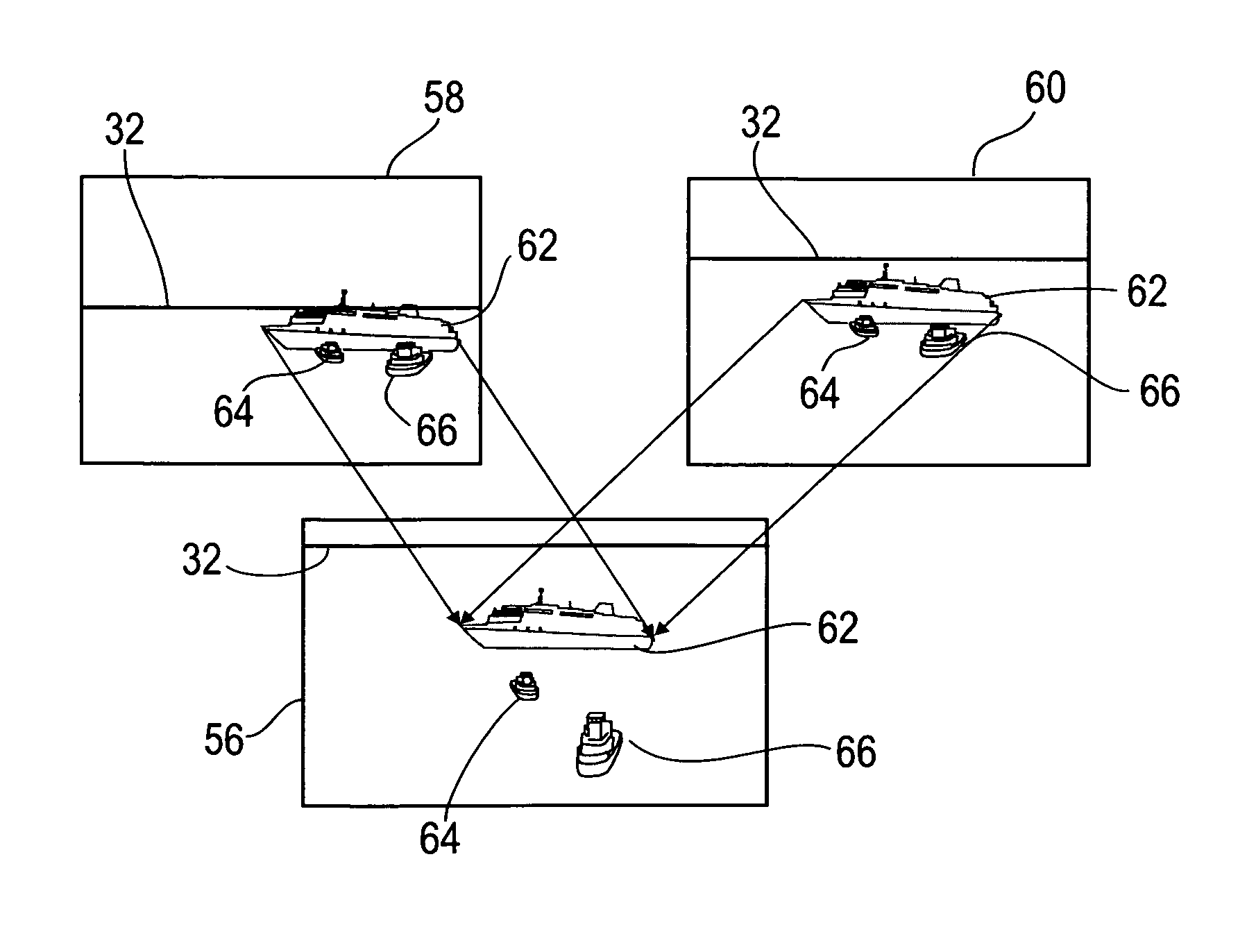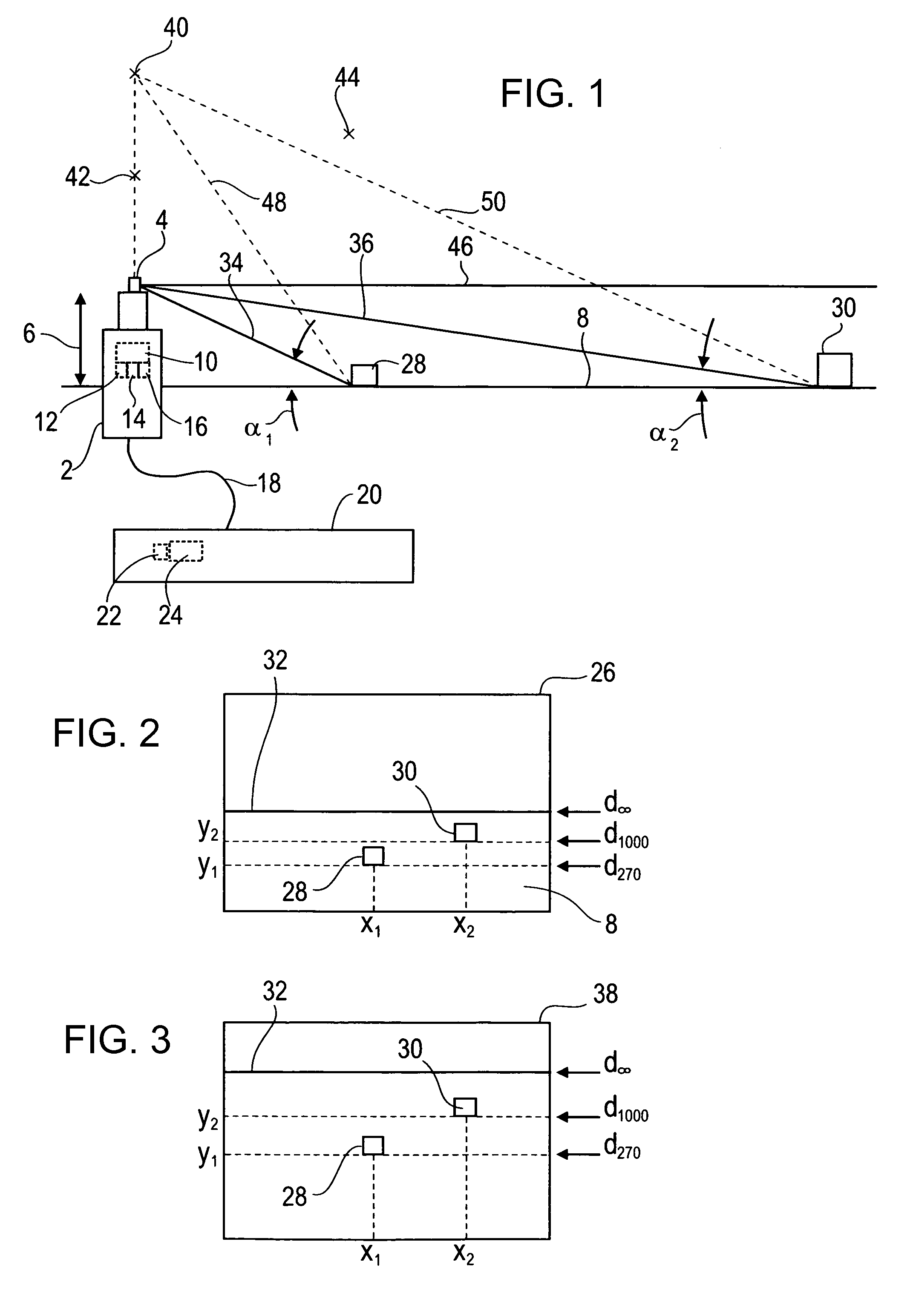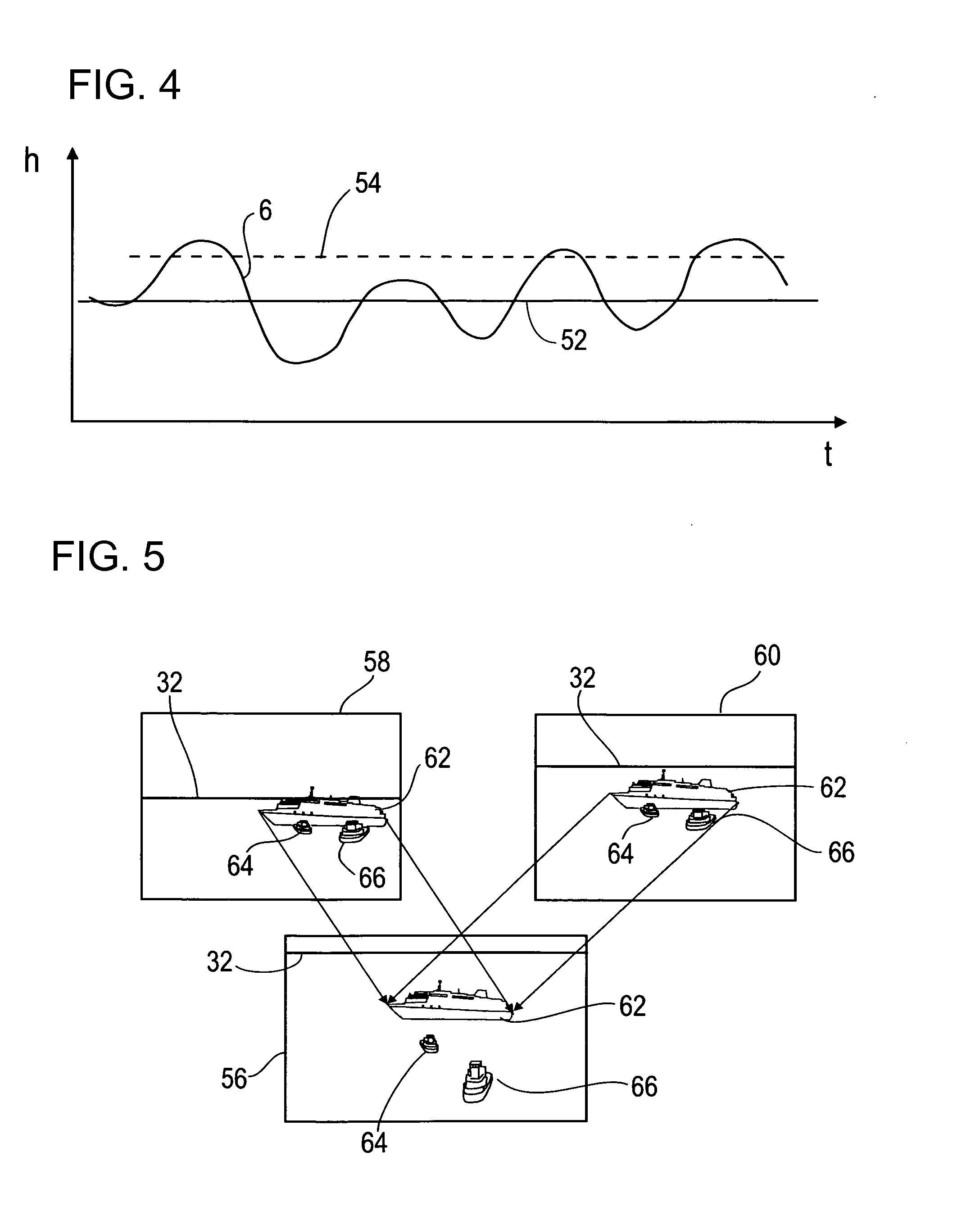Method and device for generating a representation of surroundings
a technology of surroundings and methods, applied in the field of methods and devices for generating a representation of surroundings, can solve problems such as the difficulty of an operator to correctly estimate the distance to objects located on the water surfa
- Summary
- Abstract
- Description
- Claims
- Application Information
AI Technical Summary
Benefits of technology
Problems solved by technology
Method used
Image
Examples
Embodiment Construction
[0031]Referring now to the figures of the drawing in detail and first, particularly, to FIG. 1 thereof, there is shown a communication and surveillance buoy 2 having a camera 4 which is arranged at a height 6 above a water surface 8 when the sea is calm. For signaling purposes, the camera 4 is connected to a processing device 10, which is arranged in the interior of the surveillance buoy 2 together with a data memory 12, an acceleration sensor 14 and a compass 16. The surveillance buoy 2 is connected via a towing cable 18 to a submarine, which is towing the surveillance buoy 2. Data can be transmitted via the towing cable 18 from the processing device 10 to a further processing device 22 in the submarine 20, which is connected to a display device 24 in the form of a screen. The surveillance buoy 2 forms an apparatus for production of a representation of a surrounding area on the display device 24 in the submarine 20. For this purpose, the recording of a plurality of images with the ...
PUM
 Login to View More
Login to View More Abstract
Description
Claims
Application Information
 Login to View More
Login to View More - R&D
- Intellectual Property
- Life Sciences
- Materials
- Tech Scout
- Unparalleled Data Quality
- Higher Quality Content
- 60% Fewer Hallucinations
Browse by: Latest US Patents, China's latest patents, Technical Efficacy Thesaurus, Application Domain, Technology Topic, Popular Technical Reports.
© 2025 PatSnap. All rights reserved.Legal|Privacy policy|Modern Slavery Act Transparency Statement|Sitemap|About US| Contact US: help@patsnap.com



